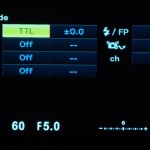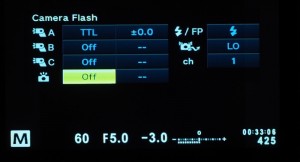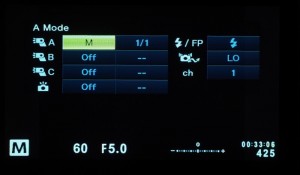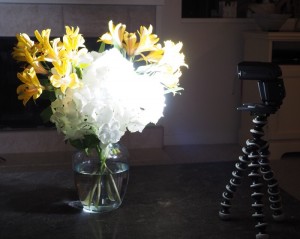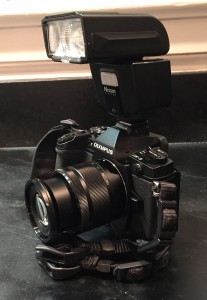 Wow! It has been a while since I really have taken the little Nissin i40 flash for a real spin. When I have used it since I got it back in January, I usually have used it on my camera in TTL mode. That's pretty straightforward. However, since using it for my presentation on Monday (http://www.infotor.com/blog/revisiting-the-use-of-the-nissan-i40-flash-with-my-e-m1/), I have been learning more about how it works with my Olympus E-PL6 and my Olympus OM-D E-M1 cameras. Since I have had to do some digging and experimentation to figure this out, I want to create my own little cheat sheet to help me next time I take it out for a spin. This post is, therefore, the notes for the creation of that cheat sheet.
My goal is to be able to use the Nissin i40 with my E-M1 and E-PL6 in either TTL mode on-camera, TTL mode off-camera, or Manual flash mode off-camera. I want to be able to switch modes quickly and easily.
Wow! It has been a while since I really have taken the little Nissin i40 flash for a real spin. When I have used it since I got it back in January, I usually have used it on my camera in TTL mode. That's pretty straightforward. However, since using it for my presentation on Monday (http://www.infotor.com/blog/revisiting-the-use-of-the-nissan-i40-flash-with-my-e-m1/), I have been learning more about how it works with my Olympus E-PL6 and my Olympus OM-D E-M1 cameras. Since I have had to do some digging and experimentation to figure this out, I want to create my own little cheat sheet to help me next time I take it out for a spin. This post is, therefore, the notes for the creation of that cheat sheet.
My goal is to be able to use the Nissin i40 with my E-M1 and E-PL6 in either TTL mode on-camera, TTL mode off-camera, or Manual flash mode off-camera. I want to be able to switch modes quickly and easily.
The i40 has lots of possible ways to be used. However, I will focus on those three ways I want to use it and just how I have figured out to be able to do that although there may be other ways to achieve similar results. Shooting in TTL (basically, flash auto mode) on-camera is very easy and straightforward. To shoot in TTL with the i40 in the camera's hot shoe, set the i40 mode dial to TTL and confirm that RC Mode on the camera's Shooting Menu 2 is set to "off." When shooting in this setup, you can control Flash Exposure Compensation (FEC) from either the rear of the i40 or from your camera using the FEC item in the Super Control Panel (SCP). Additionally, you can use both and the values will be added together! This is pretty amazing and means that you can get -/+2 stops on back of flash and an additional -/+3 on SCP for a total of -/+5 FEC stops!
If you want to still shoot in TTL mode, but take the i40 unit out of the camera hot shoe and place it in the little, plastic stand that comes with it, there are two additional steps to make this possible. To shoot in TTL with the i40 as an off-camera flash controlled by the small flash in the camera hot shoe, set the i40 mode dial to the A group. Then on the camera's Shooting Menu 2 set RC Mode "on" which will activate the "TTL Value" panel on the camera's LCD screen.  When you next press the "OK" button on the rear of the camera, the "TTL Value" screen will appear instead of your Super Control Panel. To access the SCP, simply press the Info button. Likewise, to get back to the "TTL Value" panel, press Info button again. With the "TTL Value" panel displayed, note that the lower left most cell displays "Off," indicating that the flash in the hot shoe is set to off. So, the onboard flash will send a signal to cause off-camera flash to fire, but it will not flash. In this way, only the external, off-camera flash is illuminating your subject.
When you next press the "OK" button on the rear of the camera, the "TTL Value" screen will appear instead of your Super Control Panel. To access the SCP, simply press the Info button. Likewise, to get back to the "TTL Value" panel, press Info button again. With the "TTL Value" panel displayed, note that the lower left most cell displays "Off," indicating that the flash in the hot shoe is set to off. So, the onboard flash will send a signal to cause off-camera flash to fire, but it will not flash. In this way, only the external, off-camera flash is illuminating your subject.
When you are using the Nissan i40 in this way, you adjust Flash Exposure Compensation (FEC) by accessing the "TTL Value" panel, pressing the 3 o'clock position of the Control Dial (E-PL6)/Arrow Pad (E-M1) to highlight TTL value for "A" group. With this value highlighted, turn the Control Dial (E-PL6)/Front Dial (E-M1) right to increase FEC, left to decrease it.
Controlling the Nissin i40 to shoot in Manual, off-camera flash mode is equally simple. Once again, you set the Nissin i40 mode dial to the A group and on the camera's Shooting Menu 2 set RC Mode "on." Doing this will activate the "TTL Value" panel on camera's LCD screen when you next press the "OK" button on the rear of the camera. To begin controlling the i40's power output manually, you need to highlight the TTL label and change it to "Manual." Move the highlighter to the value next to the "M" and you can now change the power output of the i40 flash right from your camera without touching the flash unit! Ignore the power setting dial on the i40, as you are controlling it from your camera!
This exercise has made it clear to me that this little flash powerhouse is absolutely no slouch when it comes to versatility. Being small, it is certainly not as powerful as its larger cousins, however, it is quite portable, and adaptable, as well as being powerful enough for quite a number of situations where using an external, off-camera flash will help you get a better shot. 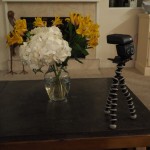 The i40 has a Guide Number, unsurprisingly, of 40, which means that at full power and the flash zoom at 105mm with the camera set to ISO 100, the i40 has a reach of approximately 131 feet or 40 meters (get it, "i40?").
The i40 has a Guide Number, unsurprisingly, of 40, which means that at full power and the flash zoom at 105mm with the camera set to ISO 100, the i40 has a reach of approximately 131 feet or 40 meters (get it, "i40?").
A few other points: The i40 comes equipped with a continuous light mode as well for use with video. It is powered by four, standard AA batteries, so , though it is small, it can recycle relatively quickly with these four batteries. And, fortunately, AA batteries are universal enough that you can find them practically anywhere. In addition, the flash head does a full 360 degree swivel and tilts to a vertical position. It comes in a funky little cube-like bag that contains the plastic stand and a plastic StoFen-like diffuser. Yes, I am now even more impressed with this flash than I was the first time I took it for a spin and it will definitely always be in my main camera bag, not in my flash gear bag! (http://www.infotor.com/blog/a-bag-for-this-and-a-bag-for-that-separating-camera-and-flash-equipment/)
Update (6/17/15): Download my cheatsheet in PDF format.
Please leave me questions or comments on my Facebook page (https://www.facebook.com/billbooz) or on Google+ (http://plus.google.com/+BillBooz). I look forward to interacting with you!
Check out my free eBook on Mastering Your Camera's Priority Modes: http://www.infotor.com/ebooks. Download and enjoy!
In addition to offering scheduled, hands-on photography classes periodically, I am also available to do one-on-one tutoring or small group lessons designed to meet YOUR needs and what you want to learn in the area of photography, using flashes, or the use of Apple products and software. Give yourself the gift of learning: http://www.infotor.com/photoclasses! And check out my tutoring bundle: http://www.infotor.com/photoclasses/tutoringbundle.php as well. A PDF of my brochure is at http://www.infotor.com/photoclasses/brochures/WHBI-Brochure_2015.pdf.


